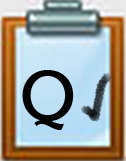Q1 Game of Life
IMPORTANT NOTE: The MINT site is currently down. We are keeping this Quest temporarily in the hopes they will republish it.
Please proceed to the next Quest. Thank you.
This Quest features activities from Northwestern Mutual
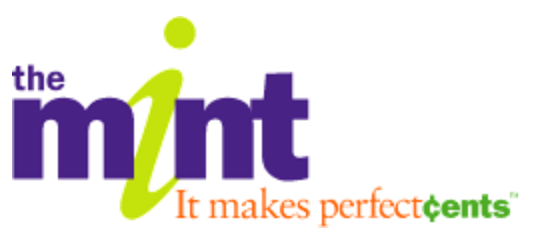
Introduction
It is time to start investigating what the future has in store for you! In this Quest you will visit the mint website where you can play a variety of games about choices, earning $, saving $ (can you be a millionaire?), spending $, and giving $. You will discover some great tips for creating your own savings goals to be able to do and afford the things you love to do.
I Can Statements
- tell the difference between income, budgets & investments
- make smart budgetary decisions
- understand the difference between earning good vs bad credit
- compare/contrast protection strategies that help pay for losses that occur in life
Key Vocabulary
Budget: A budget is a plan for managing your money.
Income: Income is the money you receive from allowance, doing jobs, working and interest from the bank.
Interest: Interest is the money the bank pays you when you save money in a special bank account.
Invest: To invest is when you use your money for a special purpose. (eg., purchasing a rare comic book that you save and will be worth more later on)
Saving: Saving is the act of not spending your money, deciding when NOT to buy something.
Vocabulary Game
Play the interactive Quizlet Game: Direct Link
Steps
1. Visit the Mint
2. Expand the content boxes below for the next steps for Fun for Teens OR Fun for Grades 4 & 5.
Start by visiting the mint section on "Tips for Teens"
Notice the different menus with activities for earning, saving, spending, owing, tracking, giving, investing, safeguarding and try it! These activities are identified below and they can help you prepare for your life ahead.

Review each section including Owing, Tracking, & Giving. Which area do you feel is most important to understand for future successes in your life? Once you have completed your evaluation of each area, turn to your right and discuss your opinion with your neighbor. You should take turns discussing which area you feel is most important. (Continue to Part Two when your discussion is completed. )
Earning: This section will help you look at salaries of different jobs, how to decode your paycheck, balancing work and school, and includes a game called "Be your own boss challenge".
Saving: This section has tips for saving money, a five-step save/spend plan, information about how banks work, about savings accounts, how to earn money and save, tricks our mind plays, and includes games called "The Truth About Millionaires," "Saving Calculator," "When Will You Be a Millionaire?" the "Compounding Calculator," and the "Power of 72 Calculator".
Spending: This section helps you evaluate whether to buy something or not, to shop smart, how to figure out when to use cash, check, or credit, and the value of money. This section includes interactions for: "How to write a check," "The Spending Challenge," and "What Kind of Spender Are You?"
Fun for Teens Part 2: Owing, Tracking, & Giving
Review the Owing, Tracking and Giving Sections on The Mint.
1. Owing: Learn about the advantages/disadvantage and facts about Credit Cards and then play the games "I Paid How Much?" "Debt Calculator" and "Credit Card IQ"
Create a graphic organizer Outlining the Advantages vs Disadvantages of having a create card. Graphic Organizers, you may use include Canva or any specified by your Teacher. Please ask your teacher how to share your organizer.
2. Tracking: Learn about keeping a money diary, tracking your checking account, and credit history. Then play the games: "Determine Your Budget," "Balance Your Checking Account"
Decide on the best way to track your money. Would it be best to create a google doc & create daily entries for how your money is being spent or would you be better off creating a google sheet that calculates money spent each day? Figure out what suits you best and track your money for one week. Are you being a smart spender? Share your results with your teacher.
3. Tracking: Read Track your Checking Account and try writing a check and tracking it in the online checking account resource.
4. Tracking: Read Your Credit History and reflect about why positive credit history is important. Play the Determine your Budget Game and balance your checking account.
6. Giving: Discover the gift of giving money, time & energy and giving things.
Review the "Giving" section above and reflect on ways you could give. Sometimes giving doesn't always include money. What are some other ways you might be able to give?
Fun for Teens Part 3: Investing & Safeguarding
1. Review the Investing and Safeguarding Tabs.
Investing: Learn about the Stock Market, how to invest your money, and taking risks. Interactives: "The Compounding Calculator," and "The Power of 72"
Safeguarding: These are very important areas to learn about.
2. Find two-three students to work with on a presentation on savings tools. Have your teacher assign you an area to create a presentation on:
- Certificate of Deposit
- Money Market
- U.S. Bonds
- Mutual Funds
- Stocks
- Collectibles
Your presentation should include:
- A Definition
- Interest
- Liquidity (accessibility)
- Features
- Images & any additional information about the tool
Present to your classmates!
3. Safeguarding is an important aspect of your life to understand as you enter adulthood. Review the aspects of safeguarding. Have a discussion with your parents and/or legal guardian about which are the most important areas to safeguard. As you age, which area(s) will you be most concerned with safeguarding?
- Protect your property
- Protect your health
- Protect your car
- Protect your family
- Protect your income
Be sure and play the "Lifespan Calculator"
Fun for Grades 4 & 5 - Part 1: Favorites and Earning $
1. Start on the What do you love to do page.
2. Make a list of the things you love to do using your computing device. Be sure to save your list and check with your teacher about saving and printing it out.
Some suggested options:
- create a graphic organizer (like canva),
- use a word cloud (such as abcya.com or tagxedo.com)
- make an audio recording of your list (vocaroo.com and save the URL link to it)
3. How many things on your list cost money? Circle them or put a $ next to them.
4. People earn money to be able to spend it on things they love to do. Together with some classmates, read the "7 Ways Kids can Earn Money".
5. Now create a new list on computer or paper titled "Things I can do to earn $" and write down at least three ideas you have to earn money.
6. Could you be a "boss" in a job? Play the "Be Your Own Boss Challenge" as a class and discuss each choice OR as directed by your teacher on your own.
7. Check with your teacher about going on to Part 2: Saving $
Fun for Grades 4 & 5 Part 2: Saving $ and Spending
 Fun for Kids/The Mint - Savings Gives you Power
Fun for Kids/The Mint - Savings Gives you Power
1. Visit the "Saving Gives You Power" Site above.
2. Look at the Saving Basics section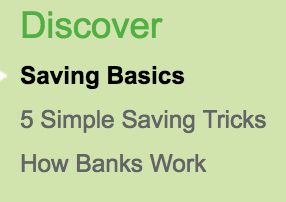
Your goal is to figure out ways to NOT spend money so you can save up for the top things on your list you made in Part 1.
3. Look at the Fun for Kids/The Mint - 5 sSmple Saving Tricks Ideas
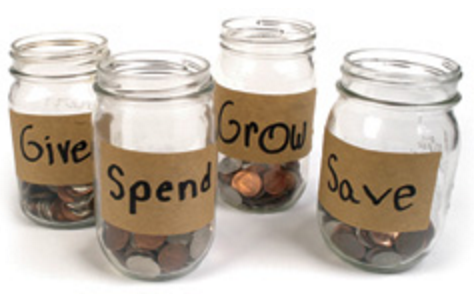
3. Download, save and complete this student Saving Document.
4. Discuss in class How Banks Help you Save Money and how you can earn money on your savings (called interest).
5. You are ready to play the game Cash Calculator. Start by using the numbers we suggest here and then you can put in your own.
How much money will you get in a week?
- We will make your allowance 1 (dollar) per week
- Save 25
- Spend 50
- Invest 15
- Give 10
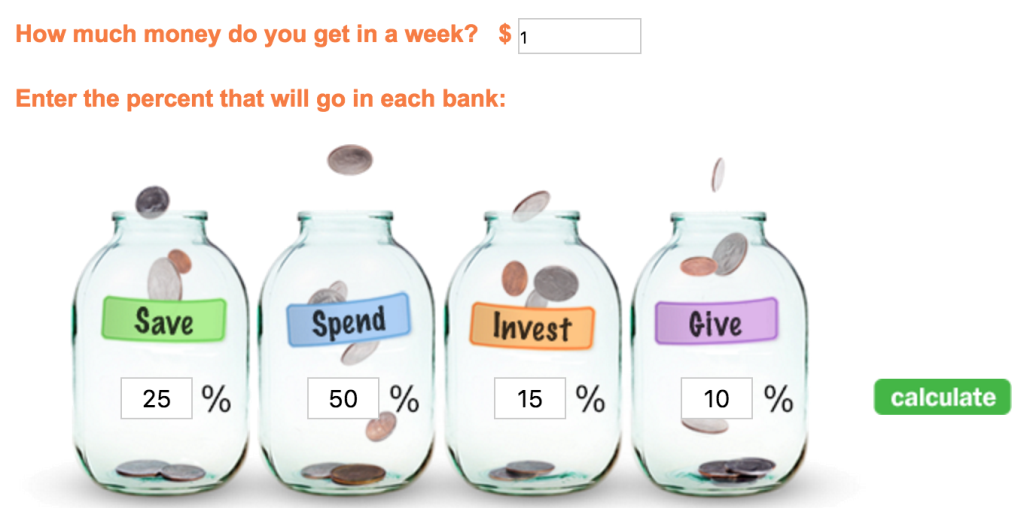
Press the calculate button and see how much you will have saved in one year.
6. Your challenge is to plan out how much money you have to make each week from your allowance (if you get one), from doing jobs (cut grass, babysitting help, wash dishes, etc..) to see if you can figure out how to save up money for one of the top things on your favorites list or $100.
7. Before you make your plan it's time to find out what kind of spender you are. Take the "What Kind of a Spender are You?" Quiz game.
8. Now it's time to make your plan for making and managing your money. Open and save and edit this Planning document, My Plan to Make, Spend and Save.
9. When you are done, share it with your class, teacher, and at home.
Fun for Grades 4 & 5 Part 3: Giving
1. Explore the section about Ways to Give Money
2. It's time to work in a small group or as a whole classroom to identify some projects that need your help and figure out what you can do. Below are three examples of what others have done.
- Look at "Some Ideas are so Simple"
- Read the "Power of One"
- Read How One Idea Leads to Another
3. To get some ideas, learn how some students have been helping others. Check with your teacher and work with a partner or a small group and watch one or more of these examples of how classrooms and students are helping others.
- 2nd grade student helps others
- Class Buys Books for Others
- Share Care Joy YouTube (award-winning)
Check with your teacher to see how you will submit your work for this Quest.
Completing this Quest
When you have finished the activities in the mint assigned by your teacher and have submitted your work, you are ready for the next Quest.
Check off this Quest on the 21t4s roadmap
Go to Quest 2 - Who Are You?
Competencies & Standards
MITECS Michigan Integrated Technology Competencies for Students, and
3. Knowledge Constructor
a. Plan and employ effective research strategies to locate information and other resources for their intellectual or creative pursuits
c. Curate information from digital resources using a variety of tools and methods to create collections or artifacts that demonstrate meaningful connections or conclusions
d. Build knowledge by actively exploring real-world issues and problems, developing ideas and theories and pursuing answers and solutions
6. Creative Communicator
a. Choose the appropriate platforms and tools for meeting the desired objectives of their creation or communication
c. Communicate complex ideas clearly and effectively by creating or using a variety of digital objects such as visualizations, models or simulations
Websites and Documents
Websites
- abcya
- Class Buys Books for Others
- Fun for Kids/The Mint- 5 Simple Saving Tricks
- Fun for Kids/The Mint - 7 Ways Kids can Earn Money
- Fun for Kids/The Mint Be Your Own Boss Challenge
- Fun for Kids/The Mint - Building on the Power of One
- Fun for Kids/The Mint - Cash Calculator
- Fun for Kids/The Mint - How Banks Work
- Fun for Kids/The Mint - How One Idea Leads to Another
- Fun for Kids/The MInt - "Power of One"
- Fun for Kids/The Mint - Saving Gives you Power
- Fun for Kids/The Mint - Some Ideas Are So Simple
- Fun for Kids/The Mint - Ways to Give Money
- Fun for Kids/The Mint - What Things do you Love to do?
- Fun for Kids/The Mint - What Kind of Spender Are You?
- Tagxedo
- The Mint - Fiancial Security for Tomorrow Starts Today
- Tips for Teens
- Tips for Teens - Earning
- Tip for Teens - Giving
- Tips for Teens - Investing
- Tips for Teens - Owing
- Tips for Teens - Safeguarding
- Tips for Teens - Saving
- Tips for Teens - Spending
- Tips for Teens - Tracking
- Vocaroo
Videos from Outside Sources
21t4s Documents & Quizzes





